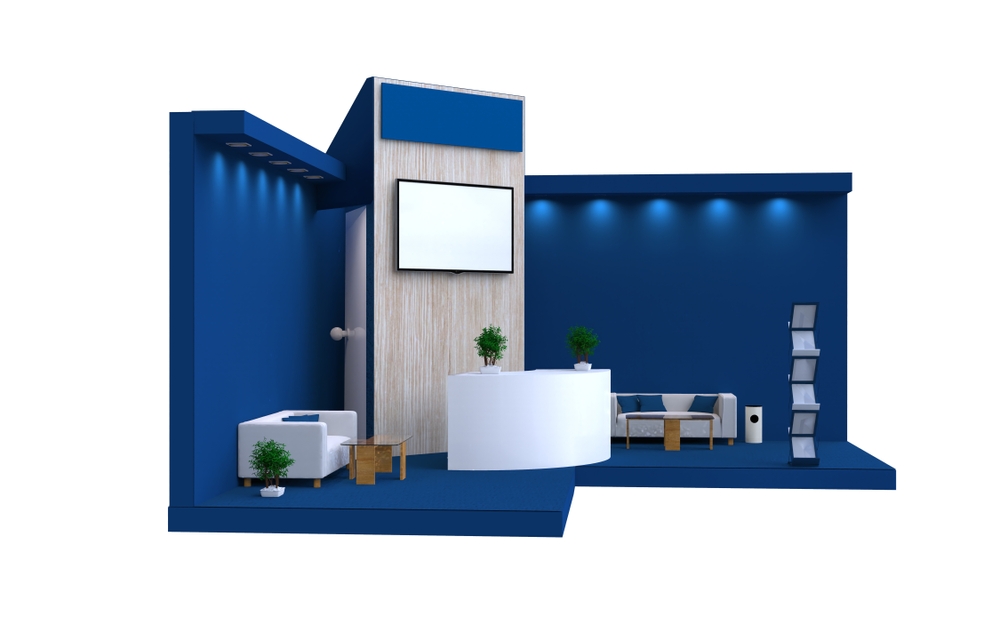Custom vs. Modular Stalls: Which One is Right for Your Brand?

28-Oct-2025
Walk into a trade show or exhibition, and you quickly notice that there are booths that pop and booths that fade away. Each brand wants to belong to the pop category. This is where the design of your stall makes a difference. The question is, will you choose to have a custom stall or a modular stall?
Both have fans, and both can meet your objectives — all dependent on what your brand message means, your budget, and your communication. Let's dive in and see which option best represents your brand.
What is a Custom Stall?
A custom stall is just that: a booth designed specifically for your brand and objectives. We consider everything: shape, lighting, materials, and color schemes. The goal is for your brand to look different because it actually is different. It is like a customized suit. A story, audience, and message, then a designer molds an idea around the brand. The attention to detail is evident, and so is the brand message.
Advantages of Custom Stall Construction
- Completely personal experience: Each visual and structural component expresses your brand’s identity. You will not have to compromise on messaging or décor.
- High-impact presence: Custom design trade show booths often have the “wow” factor. It can literally stop an attendee in their tracks.
- Unlimited creativity: You are not bound by the dimensions or pre-set designs of modular panels; you can add unique features such as curved LED walls or hanging installations.
- Greater brand recall: When visitors remember your stall, they remember your message. Custom stalls are specially designed to be memorable.
What is a Modular Stall?
A modular stall provides pre-fabricated panels and structures that can be easily assembled, rearranged or reused. You are no longer inspired by an entire stall being built from scratch. Rather, you are able to work with a flexible kit-of-parts and adjust everything accordingly.
If a custom booth is a custom suit, a modular booth is more like a sharp, off-the-rack jacket... it will look presentable no matter where it's worn. You may add custom graphics, backlit walls, and digital screens in order to personalize it further.
Pros of Modular Booth Design:
- Cost: A modular booth provides professional presentation and functionality for way less than you'd pay for a custom build.
- Reusability: Modular systems can be rebuilt for multiple exhibitions, making them particularly ideal solutions for brands attending standard shows.
- Speed of assembling and disassembling: Light-weight materials and uniform components mean faster and easier set up.
- Environmental impact: Because the new exhibit is so reusable, the environmental footprint will be lower, and there will also be fewer resources needed to build.
Cons of Modular Booth Design:
- Better design restrictions: You can only create a design within quality construction. The booth may be branded well, but will not have the same level of originality as a custom design.
- Less visual impact: Unless styled creatively, a modular booth can feel more generic than a custom design, in comparison to a more original design.
- Potential wear and tear: Continued assembly and disassembly will eventually take down the quality of modular panels if they are not assembled properly.
Comparing Custom Stall vs. Modular
|
Criteria |
Custom Stall |
Modular Stall |
|
Design Flexibility |
Total freedom in form, materials, and experience |
Limited to existing panel and frame systems |
|
Cost |
High initial expenditure |
Lower upfront cost |
|
Setup Time |
Longer due to fabrication |
Quick assembly and dismantling |
|
Reusability |
Typically one-time use |
Highly reusable |
|
Brand Impact |
Highly impressive and unique |
Professional but standard look |
|
Portability |
Heavy and complex transport |
Lightweight and portable |
|
Sustainability |
More waste due to one-time use |
Eco-friendly design reuse |
|
Best For |
One-off flagship events or large brand reveals |
Multiple events, cost tracking, easy transport |
Deciding Between Custom and Modular
Key Considerations
1. Your Event's Purpose
Decide on your objective.
When producing your first product or making a strong announcement, a custom trade show booth design generates a powerful first impression. But if the objective is simply to have presence across various events throughout the year, a modular booth design saves both time and cost, while still focusing on the branding.
2. Brand Personality
Think about how your audience perceives your brand.
For example, a high-end luxury brand or tech firm may tend toward a custom stall, it signals exclusivity and handcrafted. Meanwhile, a practical or conservation-based brand may prefer a modular setup, which signals efficiency, adaptability, and care for the planet.
3. Frequency of Exhibition
If you only take a trip to a relatively few exhibitions per year, it might make sense to invest the one-time cost in a custom booth that stands out year after year. However, for a brand that has five to ten shows lined up in various cities, a modular stall becomes more resourceful over the long run.
4. Logistics and Movement
Custom builds are often delivered in larger crates, take longer to set up and require on-site labor. Modular configurations, in many cases, fit into smaller shipping cases and can be packed down light.
If your marketing team will be moving from location to location, or even site to site internationally, modular components are far easier to manage.
5. Budget Planning
Budgeting isn’t solely about what you spend in the present—it also connects directly to longer-term ROI.
A custom stall creates a unique brand presence for those exhibitions where memory matters the most.
A modular stall simply creates the cumulative value in budgeting, particularly if it is used and rebranded multiple times.
Hybrid Options: Both Worlds
You don't have to pick either/or all the time. It turns out most brands today are opting for a hybrid option in booths, a modular space with custom-built features.
For example:
- A modular skeleton for structure and easy transport.
- Custom décor (lighting) features for uniqueness.
- Replaceable graphics so the branding can change by campaign.
This added ability gives a hybrid option more flexibility in combining practicality and a unique storytelling approach. A hybrid model can also work well throughout your exhibitions if you have a large regional presence and want to maintain unique identities for local/regional marketing campaigns.
Types of Exhibition Stalls
Understanding the different types of exhibition stalls helps you determine what style fits the appropriate event. Here is a list of the most common styles:
- Inline stalls: Bordering on being wrapped by neighboring booths on either side, with one open front. It is less expensive and straightforward.
- Corner stalls: Open on two sides, providing additional visibility and foot traffic.
- Peninsula stalls: Open on three sides, and a good choice for mid-sized brands seeking exposure from multiple angles.
- Island stalls: Open on all four sides. These stalls are typically used for premium displays and interactive experiences.
- Double-deck structures: Multi-level designs for larger custom booths. Great for VIP areas, meetings, or immersive demonstrations.
Whatever your choice of format, custom or modular, layout type plays an important role in enhancing visual flow and engagement.
Consider a custom stall if:
- You are preparing to unveil something new (like a new brand identity, or a new product that is “coming soon”) or a significant milestone (like anniversaries or even milestones).
- You only engage in one or two shows that occur over the year, but you want an impact that sticks and resonates.
- You are a brand that puts a great deal of emphasis on design aesthetics or perceived innovation.
- You have advanced AV, lighting, or structural effects to implement that cannot be easily realized within a modular environment.
To summarize, a custom trade show exhibit is the visual equivalent of a statement piece. It does not merely offer something to look at, but something to EXPERIENCE.
Choose a modular stall if:
- You attend many shows annually (and in very disparate locations).
- Cost consideration and reuse take precedent over being completely custom.
- You need an easy install with limited logistics headaches.
- Sustainability and quick updates are fundamental to your strategy.
A modular stall will be especially useful for brands that rotate campaigns frequently or create flexible formats for testing various types of engagement.
Final Reflections: Weighing Creativity and Practicality
There is no right answer to the custom stall vs modular discussion. It all boils down to aligning with purpose, audience and supporting resources.
If the intent is bold storytelling, custom structures will certainly yield greater creative potential. On the other hand, if you want a flexible and budget-friendly aesthetic that can be upgraded over time, modular trade show booths would be the best option. Most brands would prosper in the middle—versatile prototyping and a reusable infrastructure while being custom curated to the specific brand and experience.
Even though trade shows will have an attachment to first-impressions, they have a place for the long-term bond. With whatever identity gets chosen, ensure your stall (nor your brand) is diminished; be true and clear about the intent of the stall and of the brand experience whether modular, custom-structured, or otherwise.
LATEST ITEMS

28-Jul-2022

28-Jul-2022
OUR FAVORITES

30-june-2022

29-june-2022



